Contents
- 1 Regulating Act of 1773:
- 2 Pitts India Act of 1784
- 3 Charter Act of 1813
- 4 Charter Act of 1833
- 5 Charter Act of 1853:
- 6 Government of India Act of 1858:
- 7 Indian Councils of Acts of 1861:
- 8 India Council Act of 1892:
- 9 Indian Councils Act of 1909:
- 10 The Government of India Act, 1919:
- 11 Simon Commission of 1927:
- 12 Communal Award of 1932:
- 13 Poona Pact of 1932:
- 14 The Government of India Act of 1935:
- 15 Indian Independence Act of 1947:
- 16 Indian Constitution (basics):
- 17 Indian Constitution (Topics in the same order):
Historical Background of the Indian Constitution
The British came to India in the year 1600 as traders under the name of the East India Company. In 1765, they defeated the Mughal emperor Shah Alam at the Battle of Buxar in 1764, he granted Diwani rights – rights over revenue and civil justice of Bengal, Bihar, and Orissa. After the Sepoy mutiny, in 1858, the British crown assumed direct control of governance in India. They continued to rule until 1947 when India gained its independence.
They followed a policy of conquest, annexation, and consolidation in India. Thus, by the middle of the nineteenth century, most of India was controlled by the British, either directly by the East India Company or through the system of treaties and alliances with the Princely States. During this period certain measures of constitutional reforms were introduced. During the reign of Warren Hastings, the Regulating Act (1773) and Pitts India Act (1784) were passed.
Regulating Act of 1773:
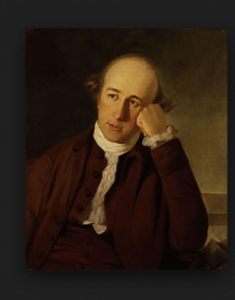
- The Regulating Act initiated the process of centralization in India. This was the first step toward regulating the affairs of East India Company by the British parliament.
- The Governor of Bengal was made the Governor General. The first man to be appointed to this post was Warren Hastings.
- An executive council of four members was created for Governor General. There was no separate legislative council.
- It subordinated the Governors of Bombay and Madras to the Governor-General of Bengal.
- A Supreme Court was set up at Fort William (Calcutta) as the Apex Court in 1774, with a Chief Justice and three assistant judges.
- The number of the Directors of the Company was fixed at 24. The Court of Directors (the governing body of the company) should report its revenue.
- The act prohibited servants of the company from engaging in any private trade or accepting bribes from the natives.
Pitts India Act of 1784
- By this Act, the real power in India passed from the Directors of the Company to the British Parliament.
- Distinguished between commercial and political functions of the company.
- “Board of Control” for political affairs of the company and “Court of directors” was for commercial affairs.
- The number of members of the Governor General’s Council was reduced to three
- Placed Indian affairs under the direct control of the British Government.
- The company’s territories in India were called “the British possession in India”.
- Governor’s councils were established in Madras and Bombay.
Charter Act of 1813
- The Company’s monopoly over Indian trade was terminated; Trade with India was open to all British subjects.
Charter Act of 1833
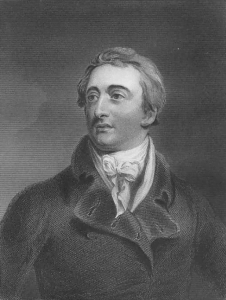
- Governor-General (of Bengal) became as the Governor-General of India.
- The First Governor-General of India was Lord William Bentick.
- The laws that were made prior to 1833 were called regulations. The laws that were made under the 1833 charter were called Acts.
- The East India Company purely became the administrative body. The Act ended the activities of the East India Company as a commercial body.
- This was the final step toward centralization in British India.
- The beginning of a Central legislature for India as the act also took away legislative powers of Bombay and Madras provinces.
- For the first time, the Governor-General’s government was known as the Government of India
- Indians were not debarred from holding any place, office and employment under the company, but were negated because of the opposition from the court of directors.
Charter Act of 1853:
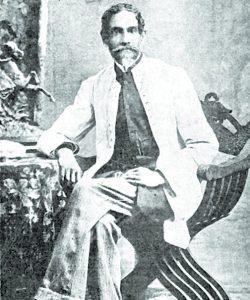
- This was the last charter act passed by the British Parliament between 1793 and 1853
- This act created the Legislative council.
- The legislative council functioned as a mini Parliament.
- The Charter Act of 1853 introduced an Open competition system of selection and recruitment of civil servants.
- This was also open to Indians. (Indians were permitted to take part in the competitive examination).
- Accordingly, Macaulay Committee (Committee on the Indian civil services) was appointed in the year 1854.
- Satyendra Nath Tagore was the first Indian to join the civil services.
Government of India Act of 1858:
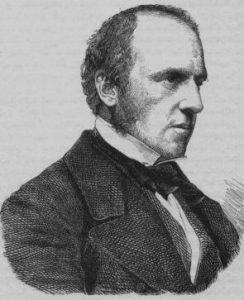
- This came into being after the Sepoy Mutiny of 1857. ( WE will learn more about the Sepoy Mutiny in the Indian History Discussion)
- This act is also known as the Act for good government in India.
- This is the first statute enacted by the Parliament for the governance of India under the direct rule of the British government.
- The GOI Act abolished the East India Company.
- The British crown assumed sovereignty over India from the East India Company.
- The designation of Governor-General of India was changed to the Viceroy of India.
- The last Governor-General of India was Lord Canning.
- The first Viceroy of India was Lord Canning.
- The GOI act abolished the Board of Control and Court of Directors.
- Secretary of State for India was created and the powers of the crown were exercised by the Secretary State for India. The Secretary of state for India is a member of the Cabinet and is responsible to the British Parliament.
- The Secretary of state for India was assisted by a council called ‘Council of India’ that contained 15 members.
- He was vested with complete authority and control over the Indian administration through the Vice roy as his agent.
- The machinery of the administration was totally unconcerned about public opinion.
Indian Councils of Acts of 1861:
- The Viceroy of India would nominate Indians to the legislative council. 3 Indians entered the Legislative council. This was the first time an Indian representation in the institutions of the Viceroy’s council.
- Legislative councils were established in centers and provinces.
- This act restored the powers of Bombay and Bengal presidencies.
- The Legislative Council for Bengal was created in the year 1862. The Legislative council for NWFP (North West Frontier Province) was created in the year 1866. The Legislative Council for Punjab was created in the year 1897.
- This act gave recognition to the portfolio system. (Portfolio system means placing each member in charge of a specific department). Lord canning introduced Portfolio system in the year 1859.
- This act also empowered the Viceroy to issue ordinances. (Discuss Ordinance in President of India chapter)
India Council Act of 1892:
- Introduced indirect elections (nomination).
- This act gave the legislative councils the power of discussing the budget and addressing questions to the executive.
- This act also provided for the nomination of some non-official members to the legislative councils by the Viceroy.
Indian Councils Act of 1909:
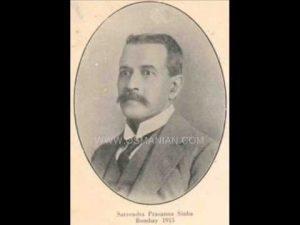
- This Act is also known as the Morley- Minto Reforms. Minto was the then Viceroy and Morley was the then Secretary of State.
- The first Indian to join the Viceroys Executive council was Satyendra Prasad Sinha as the law member)
- Introduced a system of communal representation for Muslims by accepting the concept of a ‘separate electorate’.
- The Muslim members were to be elected only by Muslim voters.
- For the 1st time, the seeds of separatism were sown.
- The 1909 act legalized communalism. Minto was regarded as the “Father of Communal Electorate”.
- Direct elections to legislative councils; first attempt at introducing a representative and popular element.
- It changed the name of the Central Legislative Council to the Imperial Legislative Council.
- The member of the Central Legislative Council was increased to 60 from 16.
The Government of India Act, 1919:
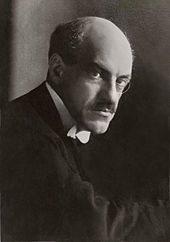
- The Indian National Congress became very active during the 1st World war and launched the ‘Home Rule’ movement. This act then came into the picture.
- This Act is also known as the Montague-Chelmsford Reforms. Chelmsford was the then Viceroy. Montague was the then Secretary of state.
On August 20, 1917, the British Government made a declaration that the policy of His Majesty’s Government is that of increasing association of Indians in every branch of administration and the gradual development of self-governing of institutions with a view to the progressive realization of responsible government in British India as an integral part of the British empire.
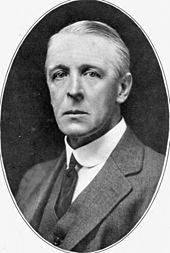
This Act introduced diarchy or dual government. It was introduced at the provinces and not at the centre.
This act also introduced the concept of bicameralism (two houses i.e. Upper and Lower House) at the centre.
The Upper House was called the Council of state composed of 60 members of whom 34 were elected.
The lower House was called the Legislative Assembly composed of 144 members of whom 104 were elected.
The powers of both the Upper and Lower Houses were equal except that the power to vote supply (budget) was given only to the Lower House.
The concept of elections was introduced.
The act of 1919 extended communal representation for Sikhs, Indian Christians, Europeans and Anglo-Indians.
The 1909 act introduced communal representation only for Muslims and not for all communities.
This act provided for the establishment of the Public Service Commission in 1926 for recruiting Civil Servants.
The act of 1919 also provided for the separation of the provincial budget from the central Budget*.
In the year 1927, a statutory commission was appointed under the chairmanship of Simon to inquire into and report on the working of the 1919 Act.
This act was could not fulfil the expectations of people in India, this is led to the birth of “Swaraj” (Self-government) agitation under the leadership of Mahatma Gandhi.
The Act created a post of a High Commissioner with residence in London to Represent India in the United Kingdom. The term of his office was six years.
The Act of 1919 was an important landmark in the constitutional development of India which opened a new era of responsible Government.
Simon Commission of 1927:
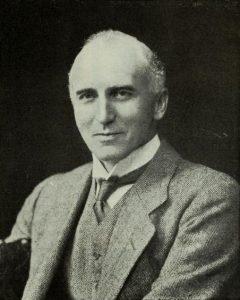
- This was a 7 member Commission. It was appointed by the British Government. The report was submitted in 1930.
- The Chairman of the Commission was Sir John Simon. All the members of the committee were British.
- The purpose of the commission was to report on the condition of India under the new constitution.
- Since all committee members were British, all the parties boycotted the Commission.
- The Simon Commission recommended for the abolition of diarchy, and continuation of communal electorate.
- The British government convened three round table conferences to consider the proposals of Simon Commission between 1930 and 1932. The conferences to be attended by the representatives of British Government, British India and Indian princely states.
- Mahatma Gandhi attended the second round table conference only.
- The recommendations were incorporated in the GOI Act of 1935.
Communal Award of 1932:
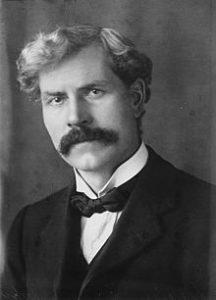
- On August 4, 1932 the communal award was announced by Ramsay MacDonald, The then British Prime Minister.
- This is meant for providing extending separate electorate to Scheduled Castes, the concept of separate electorate for depresses classes that was raised by Dr. B.R.Ambedkar.
- The proposal was accepted by the British and announced the Communal award. Mahatma Gandhi thought that this would disintegrate the Hindu society.
- Mahatma Gandhi began indefinite hunger strike in Yeravada jail (Pune, Maharashtra) against the separate electorate for Scheduled Castes.
Poona Pact of 1932:
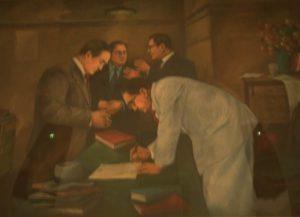
- During the hunder strike of Mahatma Gandhi, B.R.Ambedkar came under tremendous pressure to save Gandhi’s life. Hence Dr. Ambedkar accepted for an agreement.
- This is an agreement between the Dalits (Then called depressed classes) of India led by Dr. B.R.Amdedkar and the upper caste Hindus of India. This took place on September 24, 1932 at Yeravada jail.
- Under Poona pact of 1932 there shall be seats reserved for the depressed classes out of general electoral seats in the provincial legislature.
The Government of India Act of 1935:
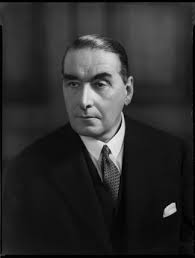
- The GOI Act 1935 prescribed a Federation. The GOI act 1935 divided the powers into: Federal List (59), Provincial List (54), Concurrent List (36). The residuary powers were vested with the Viceroy.
- This act abolished the diarchy in provinces but provided the diarchy at the centre (This did not come into operation).
- This Act was adopted in response to opposition and criticisms from the National Congress of India to the 1919 Act for doing too little in terms of granting autonomy.
- Establishment of a Federation of India (which never came into force though)
- Introduced bicameralism in 6 out of 11 Provinces. These six Provinces were Assam, Bengal, Bombay, Bihar, Madras and the United Province.
- Introduction of direct suffrage and extension of the franchise to 37 million people from the original 5 million. This act extended the franchise (Right to vote). With this 10% of the population got the voting right.
- Membership of the provincial assemblies was altered so as to include more elected Indian representatives, who were now able to form majorities and be appointed to form governments
- The establishment of a Federal Court
- Abolished the Council of India.
- The GOI act of 1935 provided for the establishment of Reserve Bank of India (RBI) in the year 1935.
- The seat of the Federal court was the Chamber of Princes in the Parliament building in Delhi.
- The first Chief Justice of the Federal Court was Maurice Gwyer.
- The present Supreme Court was established on January 28, 1950
Indian Independence Act of 1947:
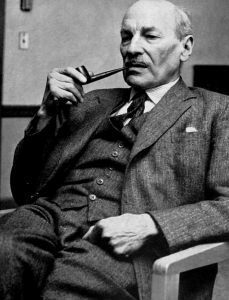
The Indian Independence Act of 1947 ended British rule and declared India as an independent and sovereign state from August 15, 1947.
On February 20, 1947, the Prime Minister of England Sir Clement Atlee declared that the British rule in India would end by June 30, 1948
The Muslim League demanded the partition.
On June 3, 1947, the government announced that the constitution is not applicable to unwilling parts of the nation.
Lord Mount Batten (then Viceroy) put forth the partition plan on the same day. It is called the Mountbatten plan. (This is also called June 3 plan). This plan was accepted by both congress and the Muslim league.
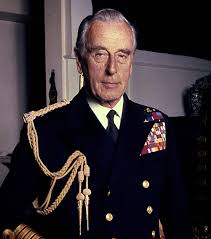
This act provided for the partition of the country into India and Pakistan.
The office of Viceroy was abolished and provided for the Governor-General for each dominion (India and Pakistan) appointed by the king.
Established responsible Governments at both the Centre and the Provinces.
It assigned dual functions (Constituent and Legislative) to the Constituent Assembly and declared this dominion legislature as a sovereign body.
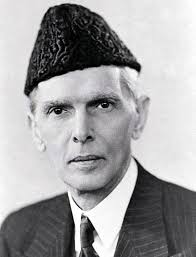
Lord Mountbatten became the first Governor-General of independent India.
Jawaharlal Nehru was sworn in as the first Prime Minister of India by Lord Mount Batten.
Muhammad Ali Jinnah became the first Governor-General of Pakistan.
Indian Constitution (basics):
- Historical Background Of The Indian Constitution
- Making Of The Constitution
- Source Of The Indian Constitution
- Salient Features Of The Constitution
- Indian Constitution Parts and Articles.
- Parts of Indian Constitution: A brief overview.
- Schedules of Indian Constitution: A brief overview.
- Must-Know Articles of Indian Constitution: A brief overview.
- List of amendments to the Constitution of India
- Comparison of Indian Constitutional Scheme with other countries
Indian Constitution (Topics in the same order):
- The preamble of the Constitution
- Union And Its Territories
- Citizenship
- Fundamental Rights
- DPSP (Directive Principles of State Policy)
- Fundamental Duties
- President
- Vice President
- Prime Minister
- Council Of Ministers – State
- Attorney-General
- Parliament: Rajya Sabha
- Parliament: Lok Sabha
- Supreme Court of India: Powers and Jurisdiction
- Governor
- The Chief Minister & CoM
- State Legislature: High Court
